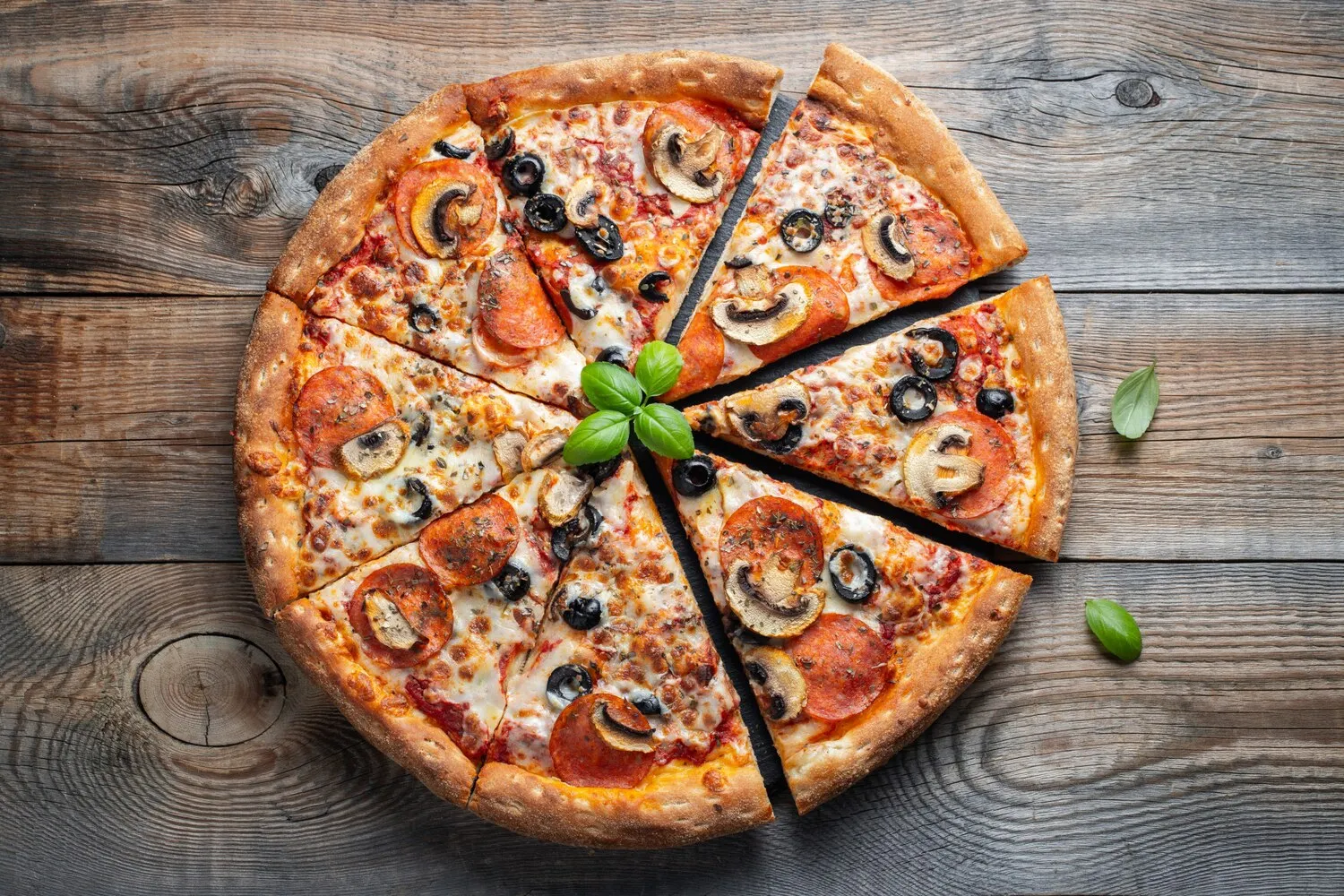
Pizza
Italian Pizza
Nutrition Facts
* The % Daily Value (DV) tells you how much a nutrient in a serving of food contributes to a daily diet. 2,000 calories a day is used for general nutrition advice.
Pizza's origins can be traced back to ancient civilizations where flatbreads were consumed with various toppings. The modern pizza, as we know it, evolved in Naples, Italy, during the 18th and 19th centuries as a food for the poor, sold in the streets. The addition of tomatoes, brought from the Americas, was a crucial step in its development.
Pizza holds immense cultural significance in Italy, symbolizing family, tradition, and community. It's more than just a food; it's a shared experience and a source of national pride.
Family Gatherings
Pizza is a staple at family gatherings and celebrations, fostering a sense of togetherness and shared enjoyment.
Regional Variations
Each region of Italy boasts its unique pizza styles and variations, reflecting local culinary traditions and ingredients. This showcases the diversity and richness of Italian gastronomy.
Symbol of Italian Identity
Pizza is recognized globally as an iconic Italian dish, representing the country's culinary heritage and cultural identity.
Italian pizza offers a diverse range of flavors, primarily centered around a harmonious blend of savory, sweet, and tangy elements. Key ingredients contribute distinct tastes, resulting in a balanced and satisfying culinary experience.
The flavor profile hinges on the quality of ingredients. The tomato sauce provides a base of sweet and acidic notes. Mozzarella cheese offers a mild, milky, and slightly tangy flavor. Basil adds a fresh, peppery, and aromatic dimension. Other common toppings, such as pepperoni, mushrooms, and olives, contribute salty, earthy, and umami elements. The crust provides a neutral, slightly yeasty base that complements the toppings.
Use High-Quality Ingredients
The flavor of pizza is directly influenced by the quality of ingredients. Opt for San Marzano tomatoes, fresh mozzarella, and extra virgin olive oil.
Master the Dough
The dough is the foundation of any good pizza. Use a '00' flour and allow for a slow, cold fermentation to develop flavor and texture.
Baking Technique
For the best results, bake pizza in a very hot oven (ideally around 450-500°C) on a pizza stone or steel. This ensures a crispy crust and evenly cooked toppings.
Explore additional Pizza dishes and restaurants
Explore PizzaDiscover top dining spots and culinary experiences in Rio Claro.
Explore Rio ClaroLearn more about the food culture, restaurant scene, and culinary heritage of Brazil.
Explore Brazil